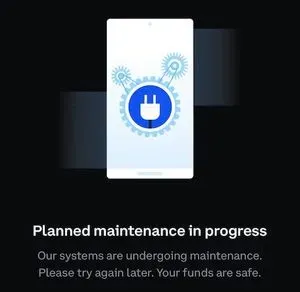The website for the NFT sale explains a six-step process to obtain one of these NFTs, including the standard steps of connecting a wallet and joining the allowlist, but ending with "Dedicate your NFT to a beloved one", which involves sending... their loved one a form email, apparently. My heart goes out to anyone receiving an NFT for Valentine's Day, much less a $2,000 one representing a portion of a painting smaller than a postage stamp. To anyone who thinks this is a good idea: I am begging you, please just buy your partner some flowers.
The Belvedere Museum dreams big (or, rather, small) by splitting one single painting into 10,000 Valentine's Day NFTs
One Monero mining pool creeps closer to that crucial 51% of the network hashrate
Jacked Ape Club NFT project team erupts in chaos
The following day, the project announced that control was back in the hands of Orange, Mitchell, Jango, and one other team member, and that the founders would be departing the project. The remaining team also announced that 105 ETH would be returned back to the project; they didn't address the 73 remaining ETH (around $220,000) that was reportedly taken by the founders.
Coinbase experiences an outage during the Super Bowl
This Super Bowl was the first to feature crypto advertisements. In addition to Coinbase's spot, Bud Light announced a beer-related NFT collection, Larry David appeared in an ad for the FTX exchange, and Crypto.com of course had a spot. What better time to make well-researched financial decisions than from your phone after a bunch of Super Bowl beers?
British tax collectors perform their first ever NFT seizure in tax evasion investigation
- "Taxman makes first ever seizure of NFTs", The Telegraph
Founder of an air taxi DAO writes of narrowly avoiding an elaborate scam attempt
While many web3 scammers are fairly primitive in their tactics, these appeared to be running a sophisticated and highly-targeted scam. The pair worked to impersonate an existing web3 project, even buying a similar domain. They apparently hired a 3D artist to produce renderings to help ingratiate one of the scammers into the target's web3 project. And when thomasg.eth inspected the scammers' addresses, he found that they were working with at least 100 ETH in funding (currently equivalent to around $300,000). thomasg.eth is currently holding over $100 million in his wallet with the same name, so it's not hard to see why the scammers might have picked him as a target worth some extra effort.
Crowdfunded TitanReach MMO game project crashes and burns after developer spends investor money on a bad crypto gamble and a Tesla
On February 11, Unravel announced that his studio "would be closing its doors for good. TitanReach will be laid to rest. The reasons for this are private." From there he went into a long message about the previously-unannounced crypto and NFT plans he had for the game, which unsurprisingly enraged the community who had supported the game.
YouTuber KiraTV, who had become close to the project, its developer, and the investor, revealed that the anonymous angel investor had been the cryptocurrency entrepreneur behind Yearn Finance, though Kira said that he believed the investor had not influenced Unravel to add crypto elements to the game. Kira alleged that Unravel had taken $150,000 of money sent by the investor and put it into $TIME, the token associated with the ill-fated Wonderland project. When he lost the money overnight, the investor cut funding for the project. It later came out that Unravel had allegedly used company money to make risky cryptocurrency investments besides the one incident with $150,000, and had even used the investor's money to purchase himself a new Tesla.
Porn actress Lana Rhoades apparently abandons her NFT project after its launch
However, only weeks after launch, Rhoades appeared to have abandoned the project, and most of the funds had been transferred out. Rhoades deleted her TikTok videos in which she had promoted it, and didn't respond to tweets asking about the project. One community member wrote on Discord that they had "spent what [they] can't lose. Spent 4k, on total I had 6k. Man I'm left with 2k only. No job and have a 2 yo son". Hopefully the guy who got the tattoo of the project logo on his shin also isn't too disappointed... The NFTs, which cost 0.1 ETH each to mint (about $250), were selling for around 0.005 ETH (about $15) on February 16, if they were being bought at all.
- Tweet by Coffeezilla
- Tweet by zachxbt
- "Lana Rhoades Rug Pulled Me", YouTube video by CoffeeZilla








